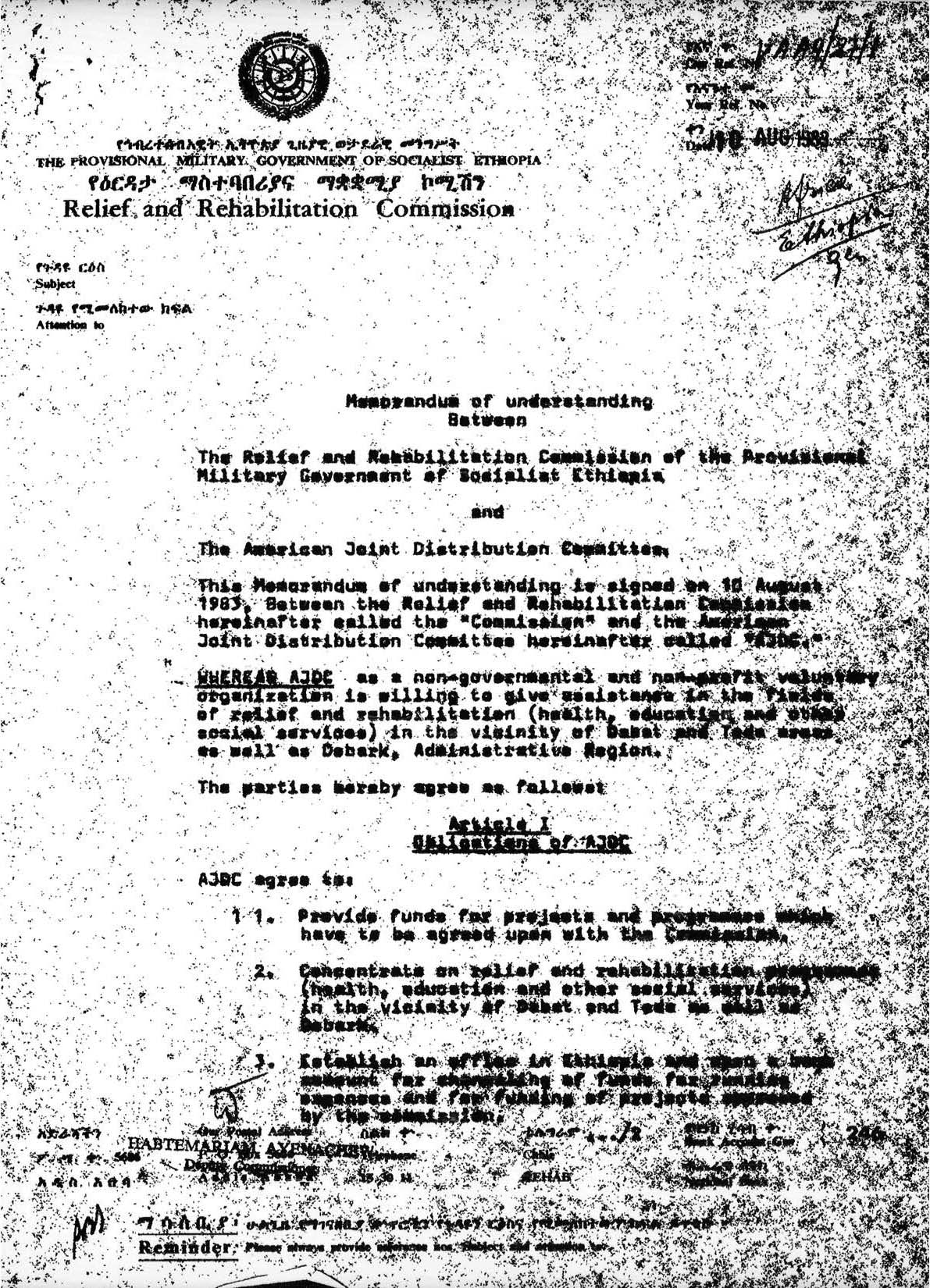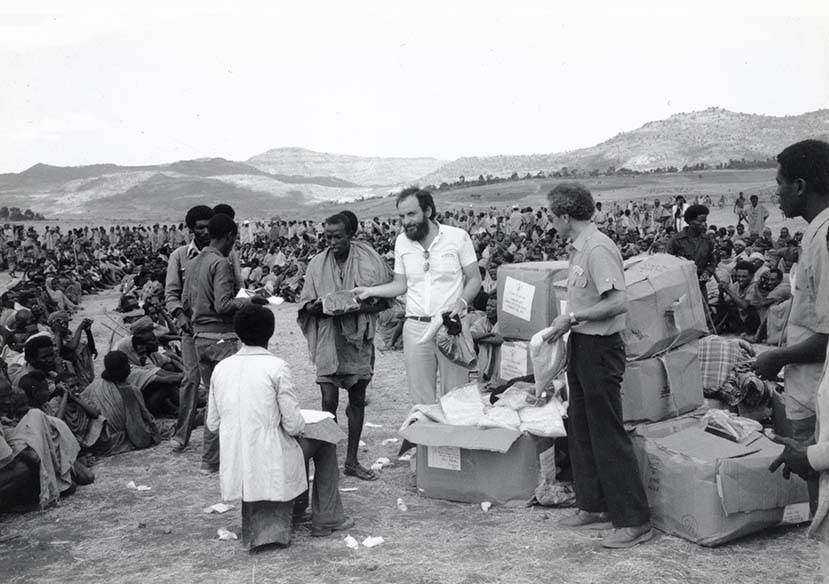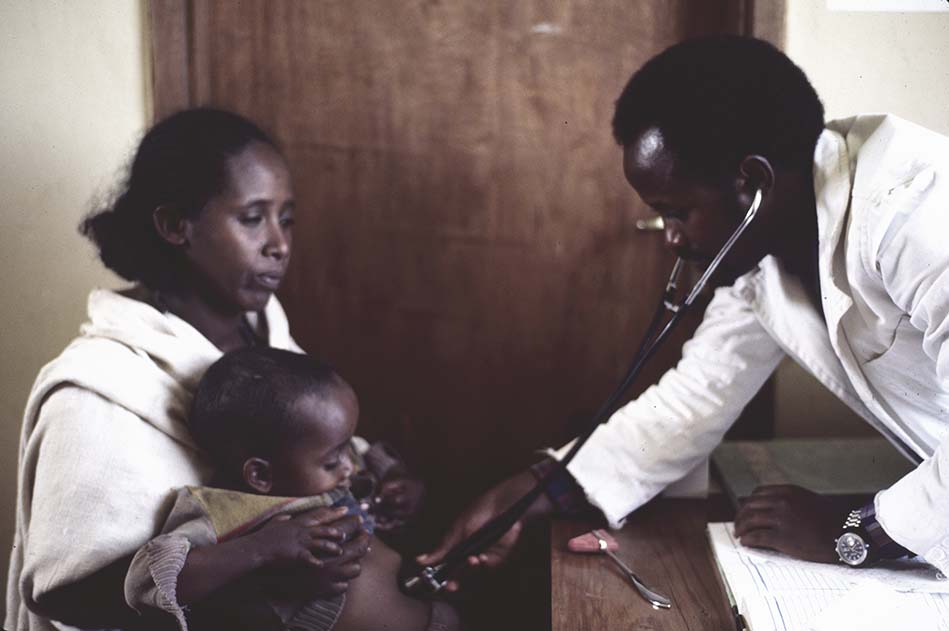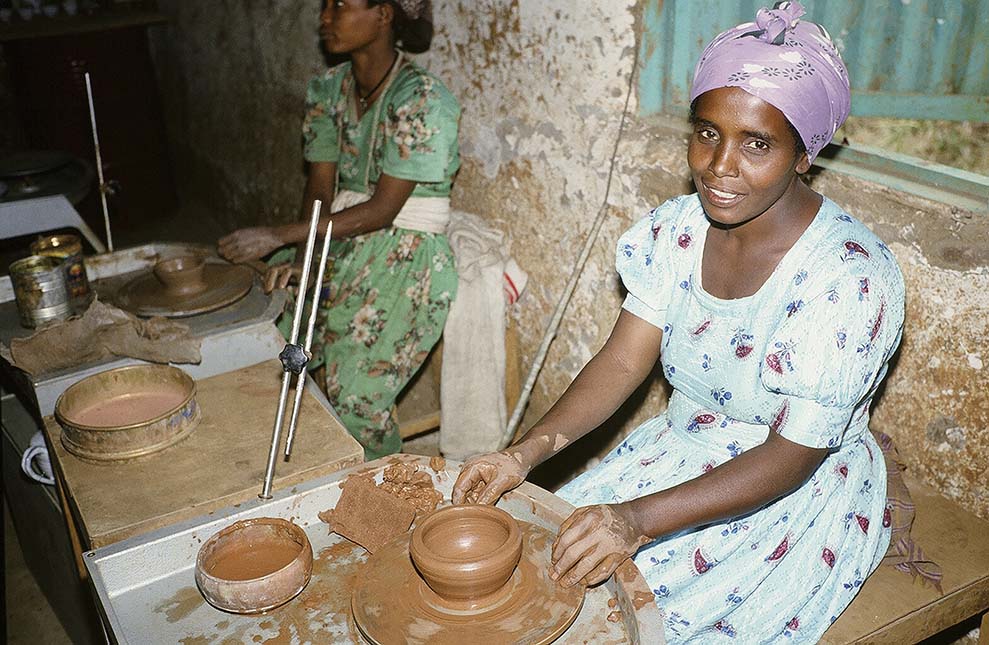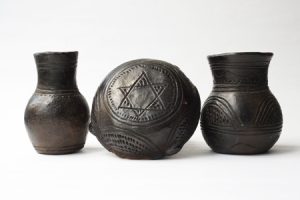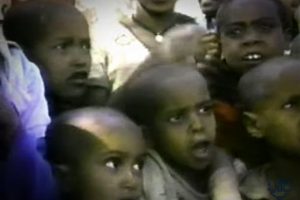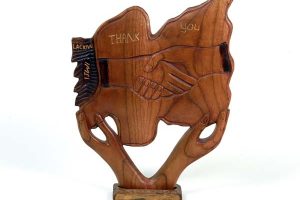
An Agreement in Ethiopia
How one document opened doors
By Rebecca Weintraub, Senior Processing Archivist
At first glance this document may look unremarkable, much like many (though not all!) other documents you might find in an archives—typed, in black and white, maybe even a photocopy. But if you take a closer look, you’ll find this truly is an example of something being “more than meets the eye.” This unassuming document, as it turns out, ushered in a new era for JDC.
What you see here is the Memorandum of Understanding between JDC and Ethiopia’s Relief and Rehabilitation Commission (RRC), agreed upon and signed in 1983, that signaled JDC’s official entry into Ethiopia. While JDC had been sending financial assistance to the Jews of Ethiopia as early as the 1970s through the London-based Falasha Welfare Association, it wasn’t until the 1980s that its presence became more formally established. Once the Ethiopian government shut down the World ORT Union program that JDC had also been supporting, JDC negotiated the establishment of its own programming in Ethiopia to help the Jewish community in need.
In 1983, as a deepening famine made the maintenance of Ethiopia’s isolationist policy untenable, JDC was officially granted permission to operate in Ethiopia. Operations were to be based in the Gondar region, where a large Jewish population resided—but on condition that JDC’s relief and medical programs would be nonsectarian. In November 1984, JDC responded to the famine further by accepting emergency donations as it had with previous crises around the world.
Left: JDC staff members distribute supplies to Ethiopian Jews. Ethiopia, 1985.
Right: A health worker examines a sick baby. Teda, Ethiopia, 1986. Photographer: Peggy Myers.
At its outset, JDC’s relief program in Ethiopia included clothing and medical supplies as well as the construction of a regional health center in Teda, located in the Gondar region, which led to a robust medical program in the area—with Dr. Rick Hodes as its longtime director. It expanded to include an agricultural project which provided oxen, seeds, and fertilizer to farmers; the construction of a ceramics factory; as well as smaller projects that included building and restoring village synagogues and distributing religious supplies. It was the construction of the Teda Health Center that marked a major step forward for JDC’s program of nonsectarian aid in Ethiopia.
This milestone had major implications for JDC’s program of nonsectarian aid globally, signified by the establishment of JDC’s International Development Program (IDP) in 1986 (this program was renamed GRID – Global Response. Innovative Development, in 2017). Nonsectarian aid was now officially a formal part of JDC’s mandate and organizational mission, though its history of such aid goes back many years prior, including assistance to famine-stricken Ukraine and Poland in the 1920s and to Cambodian refugees in Thailand in the 1970s.
Left: An Ethiopian Jewish woman smiling while she works at the pottery wheel. Ethiopia, 1987. Photographer: Kenneth Rubens.
Right: A man using the new well that was dug for clean water. Teda, Ethiopia, 1988. Photographer: Peggy Myers.
While the 1983 JDC-Ethiopia Memorandum ushered in new beginnings for JDC, you could say that this document was also a beginning of sorts for me, as well. When I started as a processing archivist at JDC in 2014, Ethiopia (from the JDC New York Office 1975-1989 collection) was the first country I worked on. I still remember sitting down at a table and having a big box placed in front of me—and I was told to dive in with no other instruction. At that point, only a week or so into my tenure at JDC, I knew nothing of the history, the people, or the programs and it was a challenge trying to keep all these names, places, concepts, and JDC-specific terminology—ones that I now know fluently—straight in my mind. I made prodigious use of a notepad where I took rigorous notes of names, job titles, locations, and more. If anything, working on Ethiopia as my first glimpse into JDC was an immersive crash course on JDC history and, frankly, global Jewish history at large. My family likes to joke that I’ve learned more of this history in my nearly nine years as a JDC archivist than I did in 12 years as a student in a yeshiva day school. While that might be a stretch, I can say that I now have a greater appreciation for the richness, diversity, and culture of Jewish communities around the world.
And it all started with a document from Ethiopia.
Learn more about JDC’s programs in Ethiopia from 1975-1989 and browse documents from our collection here. View more photos from Ethiopia in the 1970s-1980s in our gallery.
